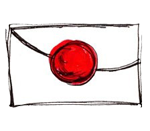Una finestra, una llum. Una altra finestra, un quotidià. Una altra finestra, un edifici on tres dones ens parlen d’un no poder parar. Tot s’ensorra, es trenca, la maleïda guerra eterna! Tres pallasses que es troben en aquest camí del èxode antic per recrear el món i tornar-nos el plaer de riure de les coses més petites, però posant el dit a la nafra quan les coses ens molesten. Viuen en les històries que s’han explicat en tots els conflictes i utilitzen números de pallassos antics per reafirmar la voluntat de ser còmiques. Tres heroïnes oblidades que ens expliquen la seva història amb la voluntat de riure i fer riure, per viure en la nostra memòria.
3 Photos
Veus que no veus presenta la versió femenina de les anomenades “entrades clàssiques”, els números que inicien un espectacle o enllacen escenes. Per una banda, i com a pallassa augusta, la Pepa Plana. Per l’altra, en el rol de pallassa blanca, la Clara del Ruste. Com canvien i quin significat prenen quan es juguen des de dues pallasses en comptes de dos pallassos? La companyia de Pepa Plana sempre ha reivindicat la figura de la pallassa i ara presenta els números circenses més clàssics. Es tracta de riure? Sí, però no només d’això, sinó de parlar, jugar i, potser, mossegar.
6 Photos
Imagine we are standing on top of a buffet in the living room of a traditional home where we find some everyday objects, amongst which stands out a painting depicting four singing angels. It is a Painted Paradise. We’ve seen it many times before, but we had never realised that one of the angels is somehow different from the rest.
9 Photos
Composed of a series of sketches that begin with a memorable and hilarious parody of Joan Maragall’s poem ‘La Vaca Cega’ (The Blind Cow) in ‘De Pe a Pa’ Pepa Plana turns herself into a poet and a rhapsody, irreverent, but full of humanity. She tells us a Chinese story, she dialogues with a potato and she also shows us how cruel can become people’s existence.
9 Photos
The play begins at the very moment when Pepa learns that she has just been made redundant from a major theatrical production where she was going to perform the leading role … or at least this is what she imagined. This is only the starting point, as Pepa is determined to go ahead with the project all by herself."Giulietta" is a show that is enriched by the direct contact with the audience, and which reveals the gaze of the clown from the female condition.
9 Photos
Starting from a series of everyday life actions taken from the female imaginary, we are presented with three characters with three different stories; the theatre’s cleaning lady overburdened because everything is falling on her shoulders, an indigent who creates her imaginary family with what she carries in her trolley and a gipsy woman who is as much an acrobat as she is a magician. They all pass through the stage where we will immediately recognize ourselves by the proximity of their actions.
10 Photos
The connecting subject that takes us through the different situations of the Greek myth is a red thread. This thread allows us to weave and tear apart a tapestry where the protagonist, a Pepa/Penèlope clown that waits for the return of Ramón/Ulysses, enjoys sharing with us the most tender and poetic situations of her wait, as well as the most absurd and comic ones.
9 Photos
Two male and a female clowns meet on this path of exodus to recreate the world and restore the joy of laughing at the smallest things, but also putting the nail on the head when matters bother us. The three forgotten misfits purposely tell us their story with the intention to remain in our memories.‘Exodus’ is a journey of no return mirroring humanity’s flight since the early days of its existence, be it for religious or political reasons, enduring famine, or currently for climatic reasons too.
6 Photos
In a world of actors, this clown emerges with all her innocence, but with the conviction that the others are those going in the opposite direction. As the director of the production says: “she liberates us from psychoanalytical readings and the excessively restrictive interpretative clichés".
19 Photos
Amaluna’ is inspired by William Shakespeare’s play ‘The Tempest’, and this is the starting point. The plot is located on an island inhabited by females, where a celebration is taking place to mark Miranda’s passage into adulthood. However, a tempest arrives to the island, and with it, so do men. This is where the twist of the story begins, followed by a love story between Miranda and Romeo blended with different characters of Shakespeare.
15 Photos
Two worlds exist beside each other. Two realities. A male clown and a female clown tell us about it, each in their own way. Two complimentary visions, two sides of the same coin. Two contradictory stories in which the big problems have simple solutions and the little ones can be really complicated. As they say, the world is not shared out fairly.
16 Photos



















